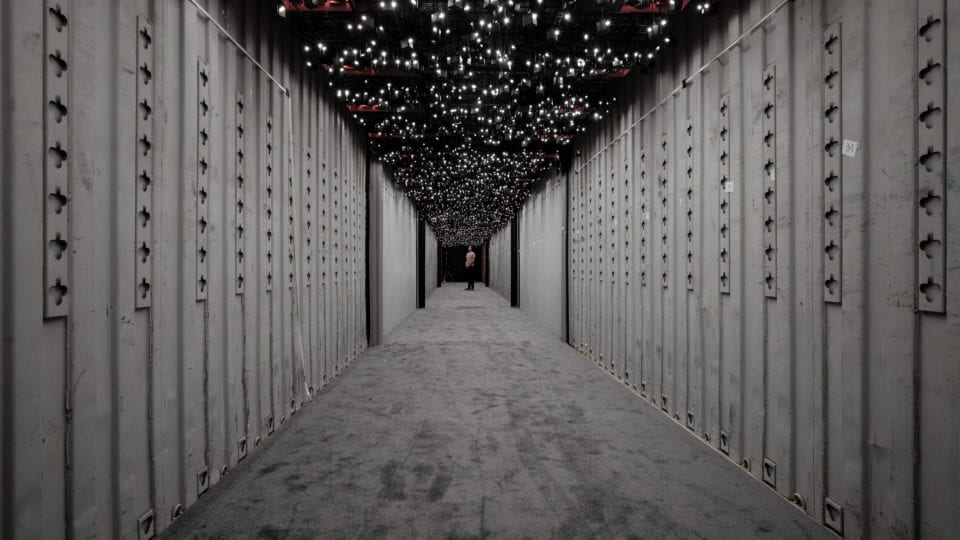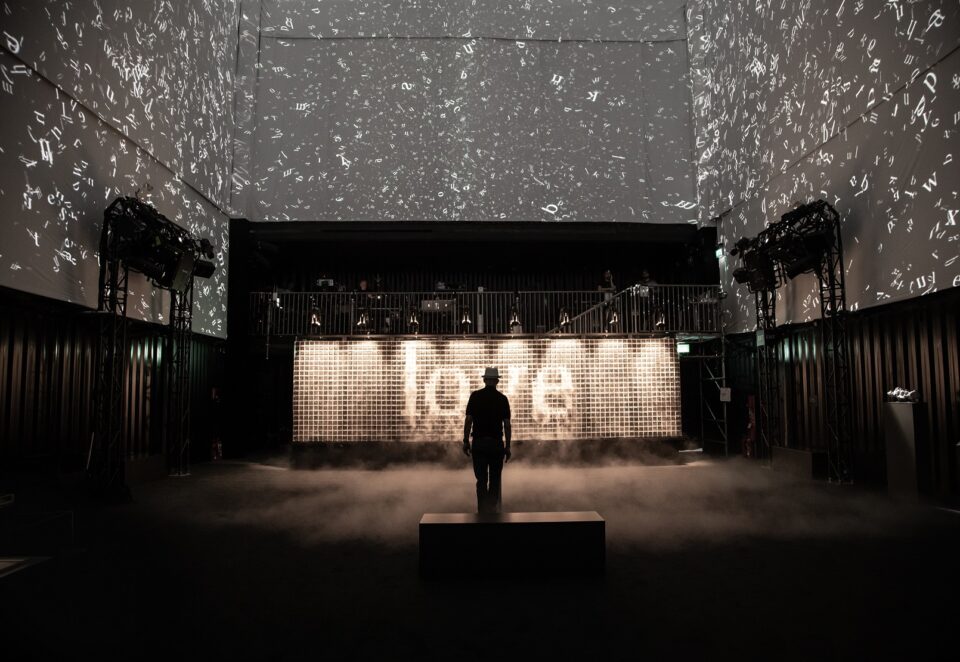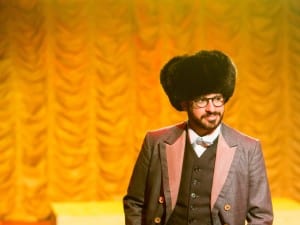Rafael Lozano-Hemmer (b. 1967) works at the intersection of architecture and performance art, creating platforms for public participation that engage with technologies such as robotics and surveillance. An interactive art environment at Manchester International Festival offers audiences the opportunity to see, hear and touch the sounds that travel through the atmosphere. The artist discusses how the show responds to the digital age, climate change and concepts of time.
A: How does Atmospheric Memory respond to computing pioneer Charles Babbage’s proposal that the air is a “vast library”?
RLH: In 1837, Babbage wrote a book called the Ninth Bridgewater Treatise. He talks about how when we speak, we create a turbulence in the air. He wondered what would happen if we had a computer so sophisticated that it could calculate the movement of the molecules, and then rewind that process to recreate the voices of everybody who has spoken in the past. To Babbage, the atmosphere was a vast library where all these voices were stored as a permanent impression. He talked about how this reality of absolute recording could mean that in the future we might hear long lost voices or re-try crimes. This text was very inspiring – it comes from a 19th century understanding of how cause and effect works, but it is also quite spiritual. It asks questions: Can we create machines, devices or strategies to listen in to those echoes? If so, which voices would we want to hear? Do we even want to live in society where everything is remembered?
A: How do these theories translate into the digital age?
RLH: 180 years after Babbage, we find that the digital atmosphere is completing his dream. Today, our phones and our cities are observing and tracking us – everything is stored. Atmospheric Memory moves from a thoughtful, romantic approach – with one hour of projections and phantasmagorias – to illustrating the state of surveillance. We have 32 cameras trained on the public with face recognition, tracking their position in relation to others. There is moment of realisation that these mechanisms are in place everywhere.

Copyright Mariana Yáñez.
A: How does the work combine state-of-the art technology with classic visual effects?
RLH: The Science Museum gave us access to Babbage’s The Analytical Engine – a programmable computer that Ada Lovelace used to write the first code. The fact that the first software was written by a woman sets an important precedent. The machine was never completed, but we have one of the prototypes on view. It’s a very rare object – a beautiful, Victorian, mechanical machine. You’re looking at the world’s first computer display. We’re placing these objects in the context of contemporary technologies and other 19th century objects.
A: What is the significance of transforming speech into something we can see, hear and touch?
RLH: On view is the world’s first 3D-printed speech bubble. We developed a laser tomograph that captures the air as it comes of out your mouth. This takes a particular form, which was then printed in aluminium. You can see the shape of a word in this unique sculpture. People are invited to touch and understand it. What beautiful is that if the very same person says the very same word, the shape will be completely different. The complexity of these pieces is not predictable, it’s actually irreversible. This allows us to understand concepts such as time. The moment we are living in is not repeatable – Babbage’s world of rewinding is not possible.

MIF19, copyright Mariana Yåñez.
A: What does the installation say about the future of the planet?
RLH: When we talk about technology, we often speak about how it is empowering us, giving us agency. In this project we take on a more critical view, exploring surveillance and climate change. Fast forward 180 years from Babbage, what is “Atmospheric Memory”? The answer is the accumulation of carbon dioxide. At the time of his writings, there were 237 parts per million of CO2. Today we have 440 parts per million in the air, which is way past the 350 that most scientists recommend as safe. This number is increasing – 63% of this accumulation has happening in the last 20 years. We can think of carbon dioxide as the memory of industrialisation. The installation visualises the problem of climate change. For example, we have a big clockwork tower in the exhibition that revolves every minute, showing an increasing CO2 counter. This is the atmospheric memory we need to pay most attention to, as the defining moment of our time.
There are 15 installations in total. Many are activated by voices of participants – you speak into an intercom and the voice gets interpreted as water waves or by speech recognition, creating massive clouds of cold-water vapour. We’ve also taken a curated archive of voices – people like Kate Tempest and Greta Thunberg. You hear these young people expressing themselves – a new generation telling us how to get our act together. We’ve selected these voices to give us hope.
A: What do you hope visitors take away from the installation?
RLH: For people to come out and not take the atmosphere for granted. To think of it in terms of the beauty of it connecting us through song and voice. It gives us life, we breathe it, but at the same time it is trying to kill us. The accumulation of carbon dioxide is leading up to a climate crisis. When people come out, I hope they feel like the atmosphere is materialised – that it’s not neutral, it’s the battleground for the survival of the species.
Manchester International Festival runs until 21 July. Find out more here.
Lead image: Rafael Lozano-Hemmer, Blue Sun, 2018.





